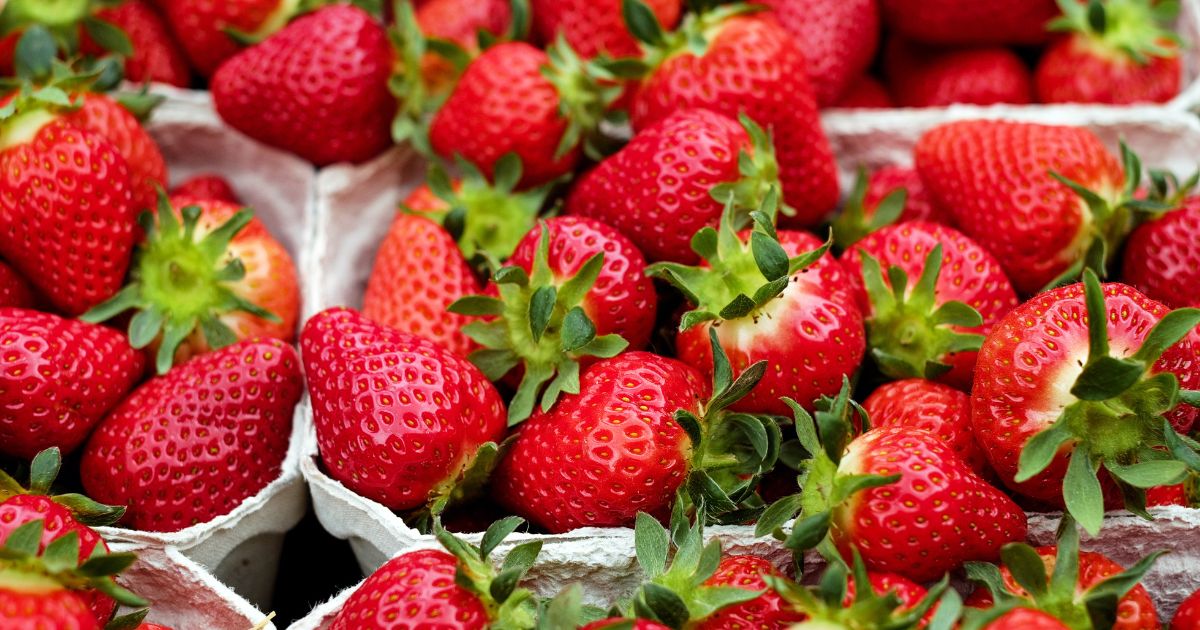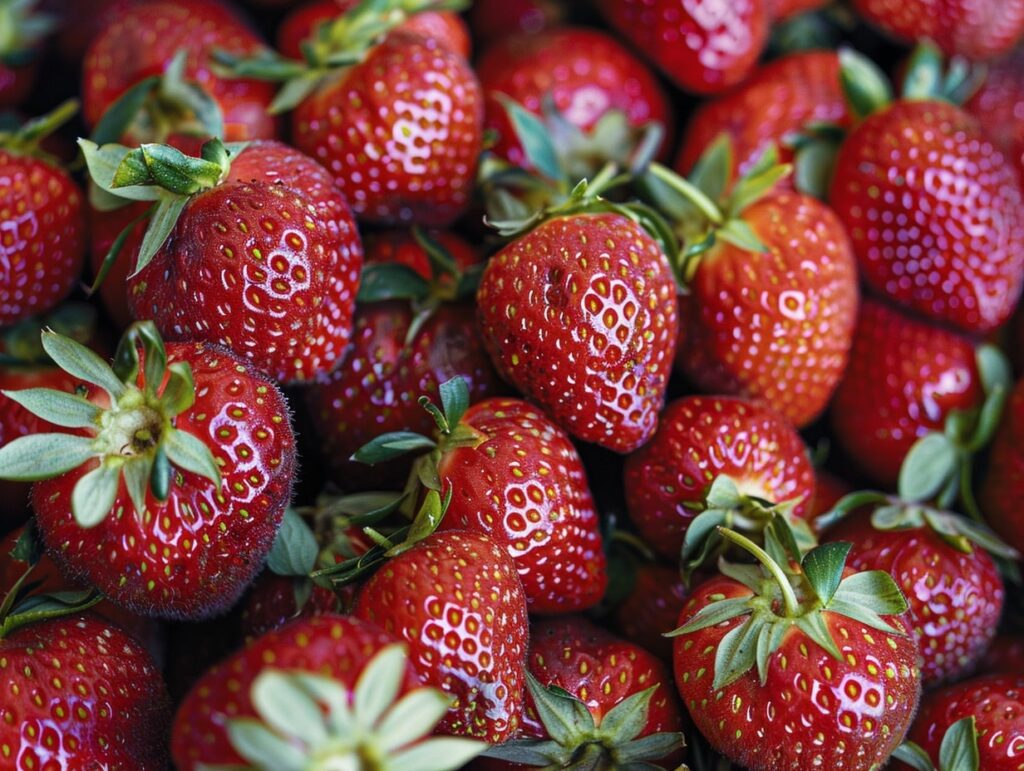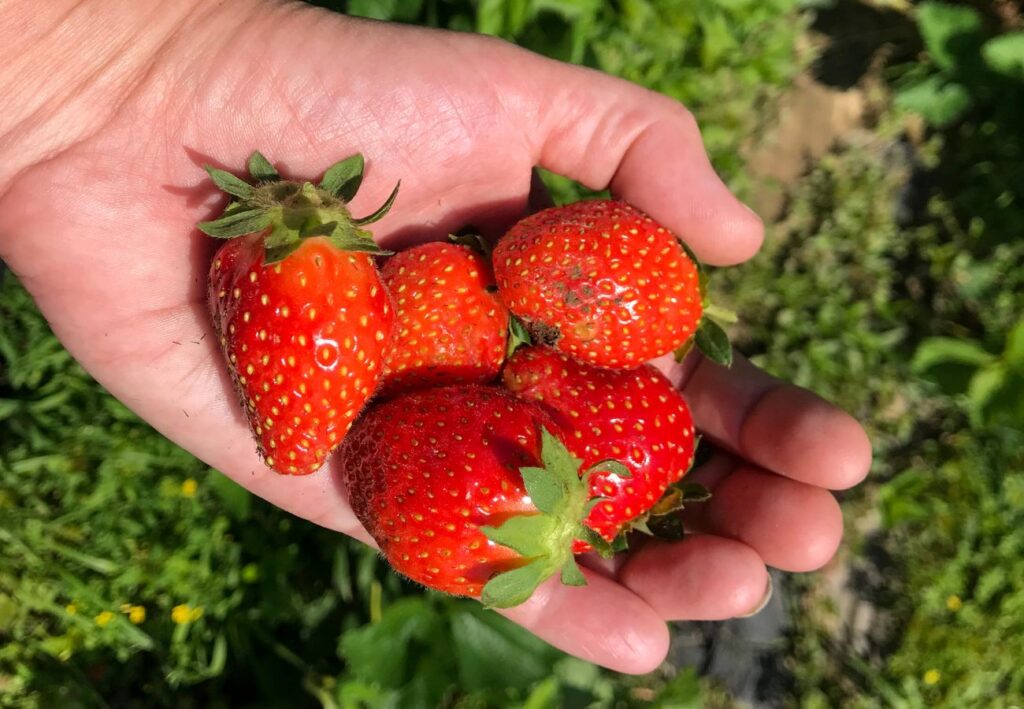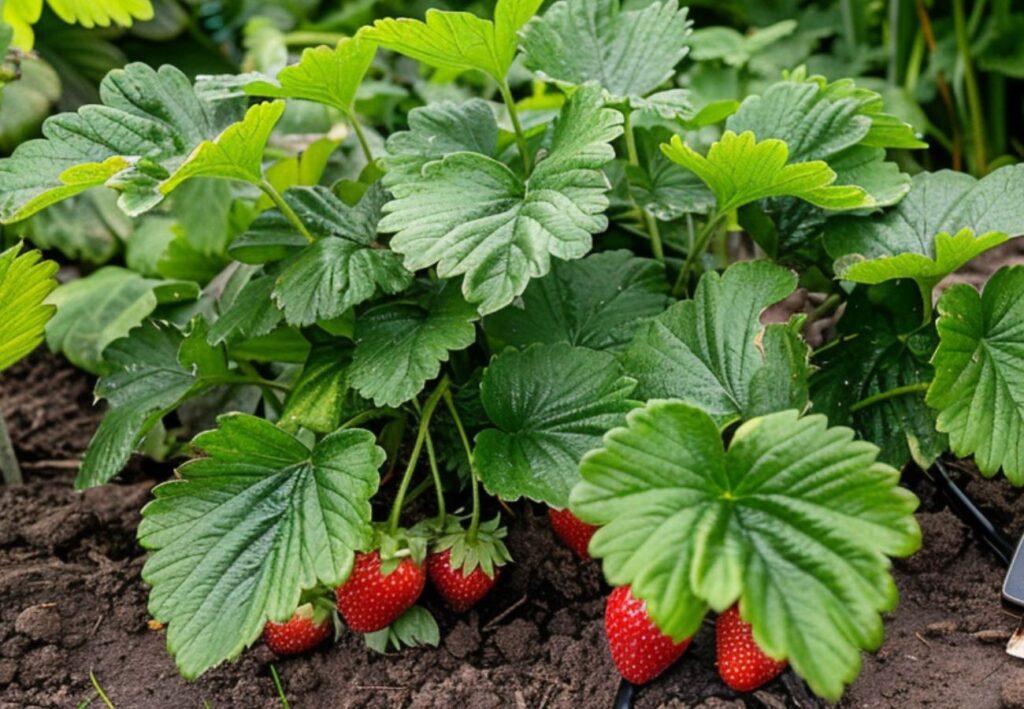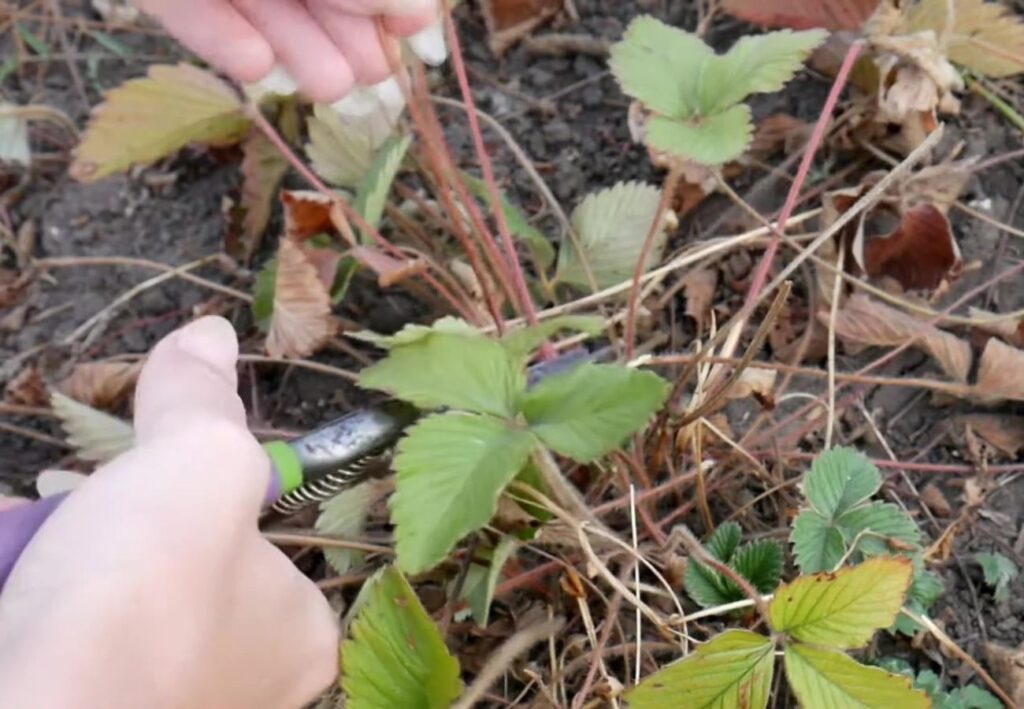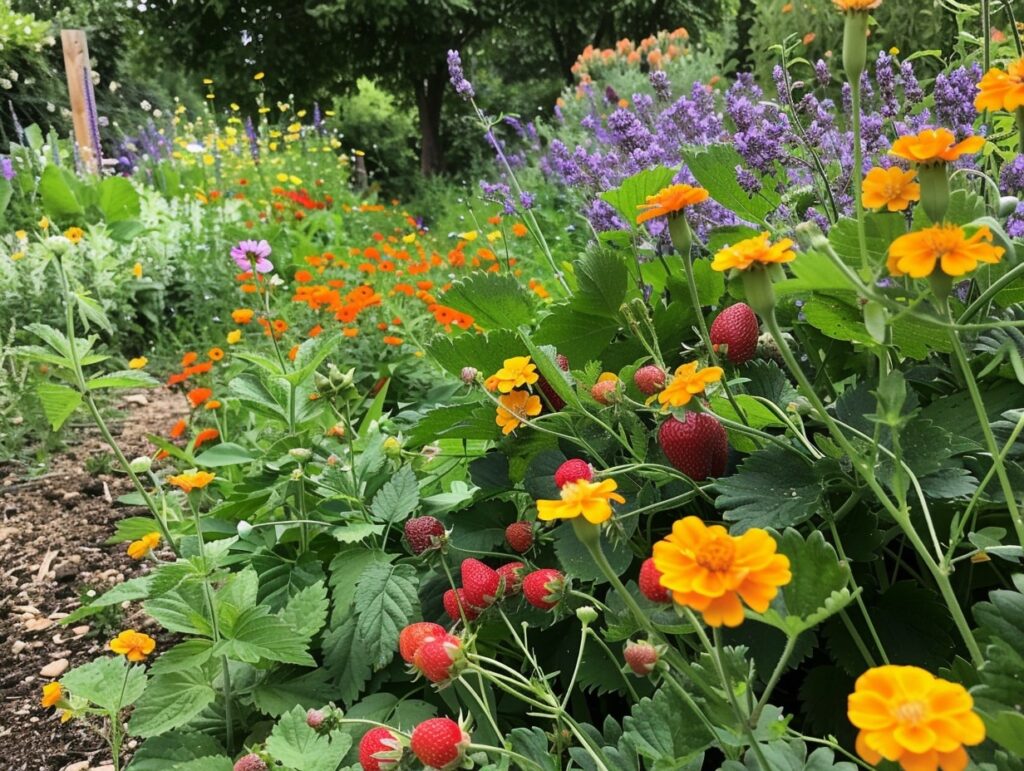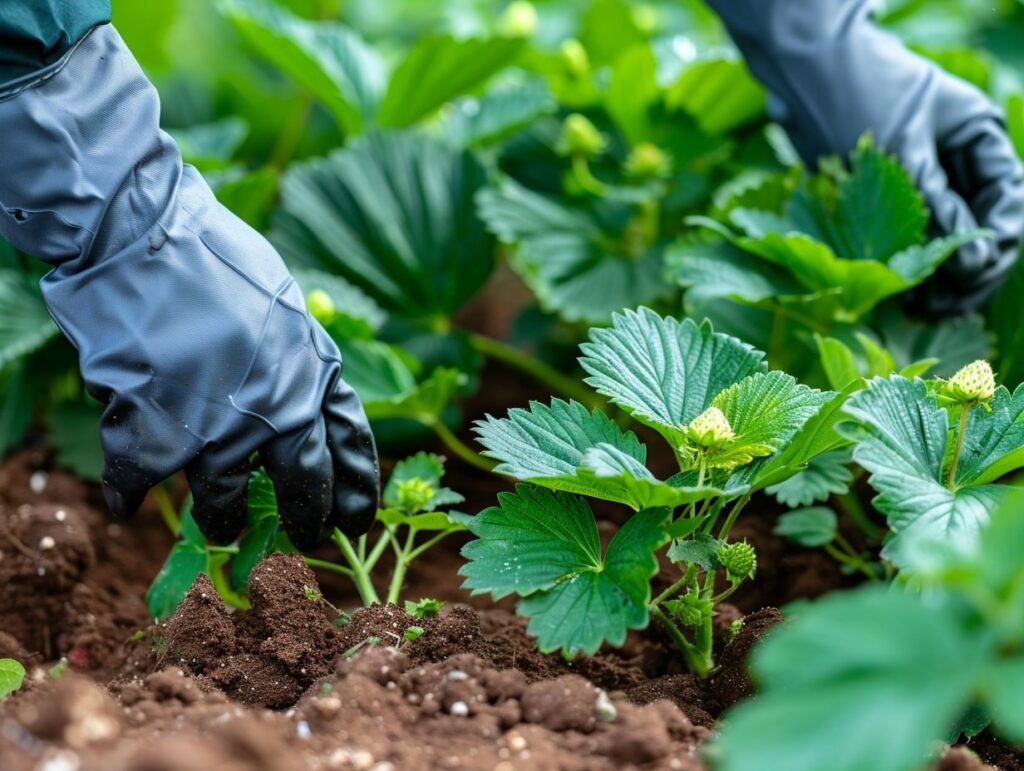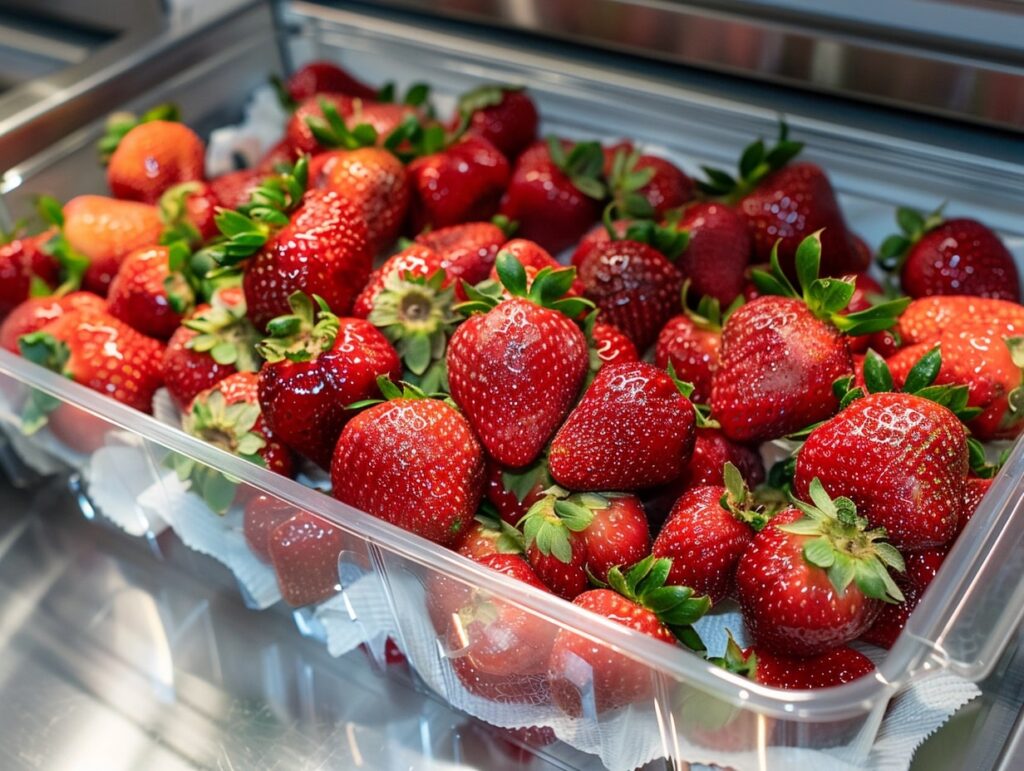Have you ever dreamed of plucking sweet, juicy strawberries straight from your garden? Imagine the satisfaction of biting into a berry bursting with flavor, knowing it came from your very own backyard.
Strawberries are not only a delightful treat but also a vibrant addition to any garden.
Ready to discover the secrets to growing the juiciest, most flavorful strawberries? These seven proven techniques will ensure your garden is filled with delicious, homegrown berries all season long.
1. Choose the Right Variety
Selecting the best strawberry variety is crucial for ensuring a bountiful harvest of juicy, flavorful strawberries. Different types of strawberries thrive in different climates and have specific growing needs.
Understanding Strawberry Types
Strawberries come in three main types: June-bearing, everbearing, and day-neutral.
June-bearing strawberries produce a large crop once a year, typically in late spring or early summer. They are ideal if you want a big harvest for canning or making jam.
Everbearing strawberries yield fruit two to three times a year, usually in spring, summer, and fall. They are perfect if you prefer to enjoy fresh strawberries over a longer season.
Day-neutral strawberries produce berries continuously throughout the growing season, as long as temperatures stay between 35°F and 85°F. They are great for consistent fruit production.
Understanding these types will help you decide which variety suits your needs and growing conditions.
Selecting Varieties for Your Climate
Climate plays a significant role in choosing the right strawberry variety.
Warm climates are suited for varieties like ‘Sequoia,’ ‘Chandler,’ and ‘Camarosa,’ which are known for their heat tolerance.
Cooler regions benefit from varieties such as ‘Hood,’ ‘Rainier,’ and ‘Shuksan,’ which thrive in lower temperatures and shorter growing seasons.
Humidity levels are also important. In humid areas, select disease-resistant varieties like ‘Allstar,’ ‘Earliglow,’ and ‘Jewel.’
To find the best match, research which varieties are recommended for your specific region. Local nurseries and agricultural extensions can be valuable resources for this information.
Choosing a variety that’s well-suited to your climate will help ensure a successful and enjoyable strawberry harvest.
2. Plant in Optimal Conditions
Ensure your strawberry bed is set up properly with the right soil, sufficient sunlight, and correct plant spacing to promote healthy growth and flavorful berries.
Soil Requirements
Strawberries thrive in well-draining, fertile soil. The ideal soil pH ranges from 5.5 to 6.8. You can test your soil’s pH with a home testing kit or send a sample to a lab for accurate results.
Amend your soil with organic matter like compost or aged manure to improve fertility and drainage. Avoid heavy clay soils as they retain too much moisture and may cause root rot.
Sandy loam soils are perfect, offering excellent drainage and necessary nutrients. Ensure consistent moisture levels but avoid overwatering, which can lead to diseases.
Bed Location and Sunlight
Choose a sunny spot for your strawberry bed, as strawberries need at least 6-8 hours of direct sunlight daily. Full sun helps the plants develop sweet, succulent berries. Shade-tolerant areas usually produce lower yields and less flavorful fruit.
Avoid low-lying areas prone to frost and locations with poor air circulation to minimize disease risks. Slightly elevated beds are ideal for proper drainage and frost protection. Rotate your strawberry bed location annually to prevent soil-borne diseases and pests from establishing.
3. Proper Planting Techniques
Space strawberry plants about 18 inches apart in rows. Rows should be 3-4 feet apart to allow enough space for easy access and air circulation. Crowd planting leads to poor airflow and increases disease risk.
For raised beds, maintain the same spacing. Planting too close reduces the plants’ access to sunlight and nutrients, hindering growth. Mulch with straw or pine needles between the plants to retain moisture, reduce weeds, and protect fruits from direct soil contact.
Pruning helps manage plant growth and improves fruit production. Remove old, dead leaves and runners to direct energy to fruit-bearing parts. Trim the outer leaves to increase airflow, reducing the risk of disease.
Train your strawberry plants to grow in specific directions or supports. This allows better sunlight exposure, which is crucial for developing sweet, juicy berries. Consistent pruning and training ensure your plants remain healthy and productive.
4. Encouraging Pollination
Pollination is key to fruit development. Plant flowers nearby to attract bees and other pollinators. Use a gentle hand to shake the plants if natural pollinators are not present. This helps move pollen between flowers.
Avoid using pesticides that harm pollinators. Opt for natural or less harmful alternatives to ensure bees and other beneficial insects thrive in your garden. Promoting pollination will result in a higher yield of well-formed, flavorful strawberries.
5. Watering Wisely
Consistent watering is vital for juicy strawberries. Strawberries need about 1-1.5 inches of water per week, especially during fruiting. Water early in the day to allow foliage to dry before nightfall, reducing the risk of fungal diseases.
Drip irrigation or soaker hoses are ideal as they deliver water directly to the roots without wetting the leaves.
6. Fertilization and Care
Strawberries are heavy feeders and benefit from regular fertilization. Apply a balanced fertilizer (such as 10-10-10) at planting time. Avoid high nitrogen fertilizers, as they can promote excessive leaf growth at the expense of fruit production.
During the Growing Season
- Flower Removal: For the first year, remove the flowers of June-bearing strawberries to establish a strong root system. For everbearing and day-neutral types, remove flowers until early July.
- Pest and Disease Management: Keep an eye out for common pests like slugs, aphids, and spider mites. Use organic controls like neem oil or insecticidal soap if needed. Rotate strawberry beds every three years to prevent soil-borne diseases.
7. Harvesting and Post-Harvest Care
To maintain the juicy, flavorful characteristics of your strawberries, paying attention to harvesting and storage is crucial. Proper techniques ensure your strawberries stay fresh longer, and effective preservation methods allow you to enjoy them year-round.
Best Harvesting Practices
Harvest your strawberries when they are fully red and ripe—this ensures maximum sweetness and flavor. Use clean scissors or shears to cut the stem about half an inch above the berry, taking care not to damage the plant.
Harvest in the morning when the berries are cool and dry. Avoid picking after rain as wet berries can mold quickly. Handle each berry gently to avoid bruising.
Storing Strawberries for Freshness
Keep unwashed strawberries in a breathable container lined with paper towels to absorb excess moisture. Store them in the refrigerator’s crisper drawer, ideally at 32°F to 36°F.
To keep them fresh, sort through the berries daily, removing any that show signs of mold or spoilage. Tip: Washing them just before eating helps extend their shelf life.
Freezing and Preserving Methods
For freezing, rinse and dry the strawberries thoroughly. Place them on a baking sheet in a single layer and freeze until solid. Transfer to airtight containers or freezer bags, removing as much air as possible.
For preserves, consider making jams or syrups. Cooking the strawberries with sugar and a bit of lemon juice helps maintain their flavor and extends their usability. Properly sealed jars can last for months in a cool, dark place.
Growing juicy, flavorful strawberries in your garden requires careful attention to variety selection, planting conditions, watering, fertilization, and harvesting techniques.
By following these seven proven methods, you’ll be well on your way to enjoying a bountiful harvest of delicious strawberries that you can savor fresh or use in your favorite recipes.
